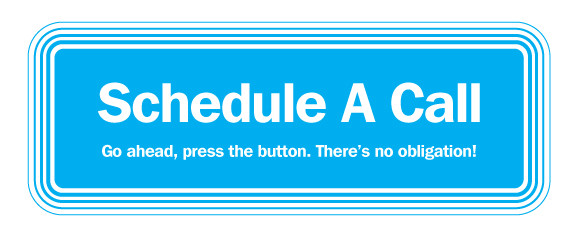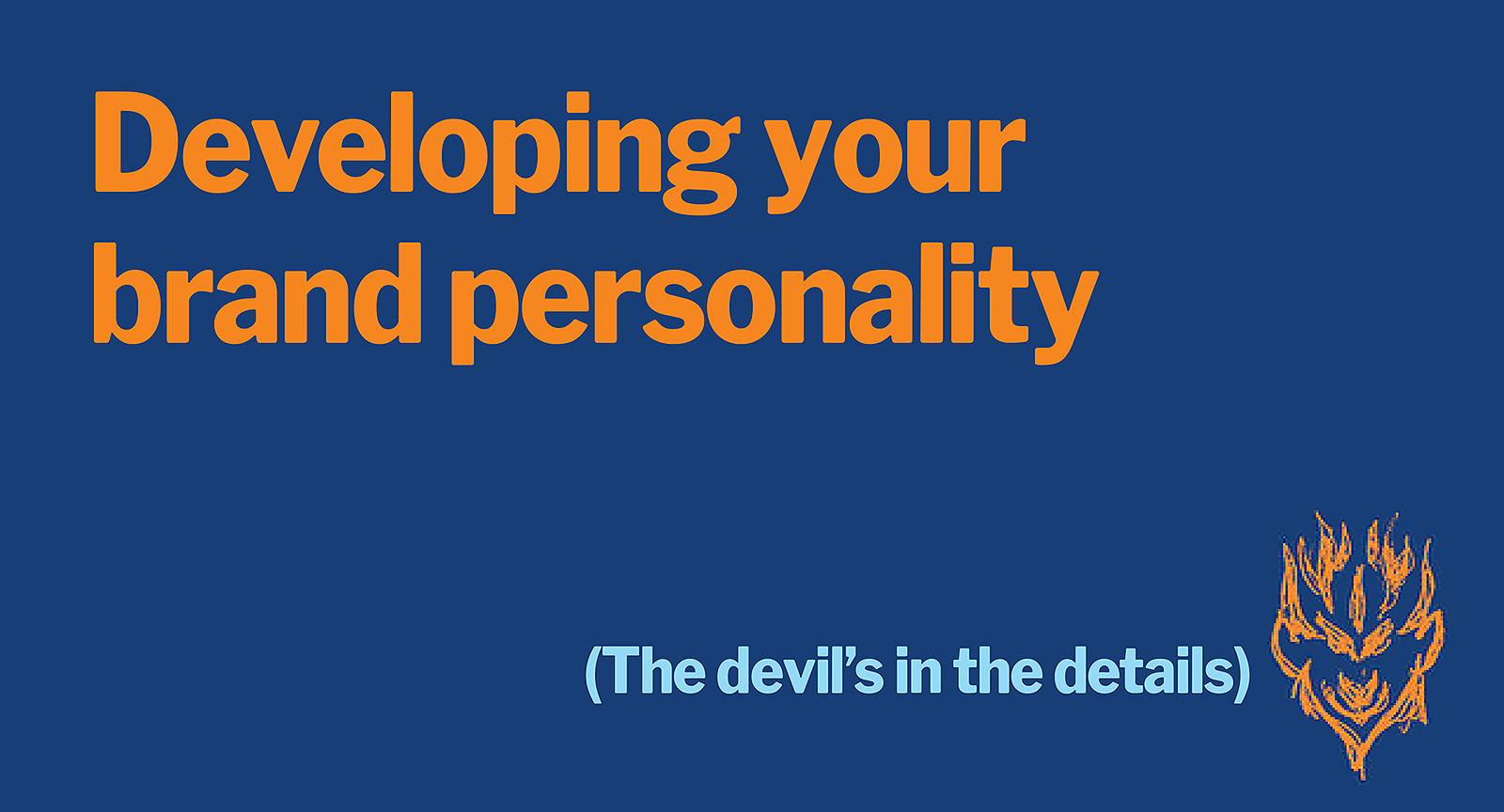
In the same way as the clothes you wear and the car you drive are strongly aligned to your own personality, your brand’s personality affects how your audience experiences your company or product at a very visceral level. From your brand’s name to how your sales team interacts at client and vendor meetings, a consistent ‘face’ to your brand can either reinforce or undermine.
Maybe you already have a logo, a website and a brand standards manual, so you’re all set, right? Not necessarily. Defining the subtleties of how your brand comes across in all its forms can be more complex than it looks on paper. If there was one correct branding solution, all products would look the same. Even within a set of strict parameters, there can be many viable options. The key is, of course, developing the best one for your needs.
A good example of a well-rounded branding development is CMA’s case study of Ignite Grilling Accessories.
 In this instance, the client was involved with CMA as early as the naming and positioning stages. This way, through collaborative discovery, they would have a familiarity with what the brand was trying to convey beyond the design brief. Through research and discussion in partnership with the brand owners, as well as through participation in the shaping of the brand’s message, its journey can proceed on a smooth, clear and consistent course.
In this instance, the client was involved with CMA as early as the naming and positioning stages. This way, through collaborative discovery, they would have a familiarity with what the brand was trying to convey beyond the design brief. Through research and discussion in partnership with the brand owners, as well as through participation in the shaping of the brand’s message, its journey can proceed on a smooth, clear and consistent course.
The parent company of Ignite, Base 4, had been licensing the brand of a major maker of barbecue grills for their line of barbecue tools and accessories. The grill maker notified them that they were terminating the arrangement in order to produce their own line of accessories. Base 4 would be out of that business unless they acted quickly. Since Base 4 had developed all of the retail sales relationships, they chose to work with CMA to quickly develop their own competitive brand.
Base 4 chose Ignite as their preferred brand name, for its added dimension of “igniting” sociability, which meant it could be used for a broad range of products for outdoor get-togethers.
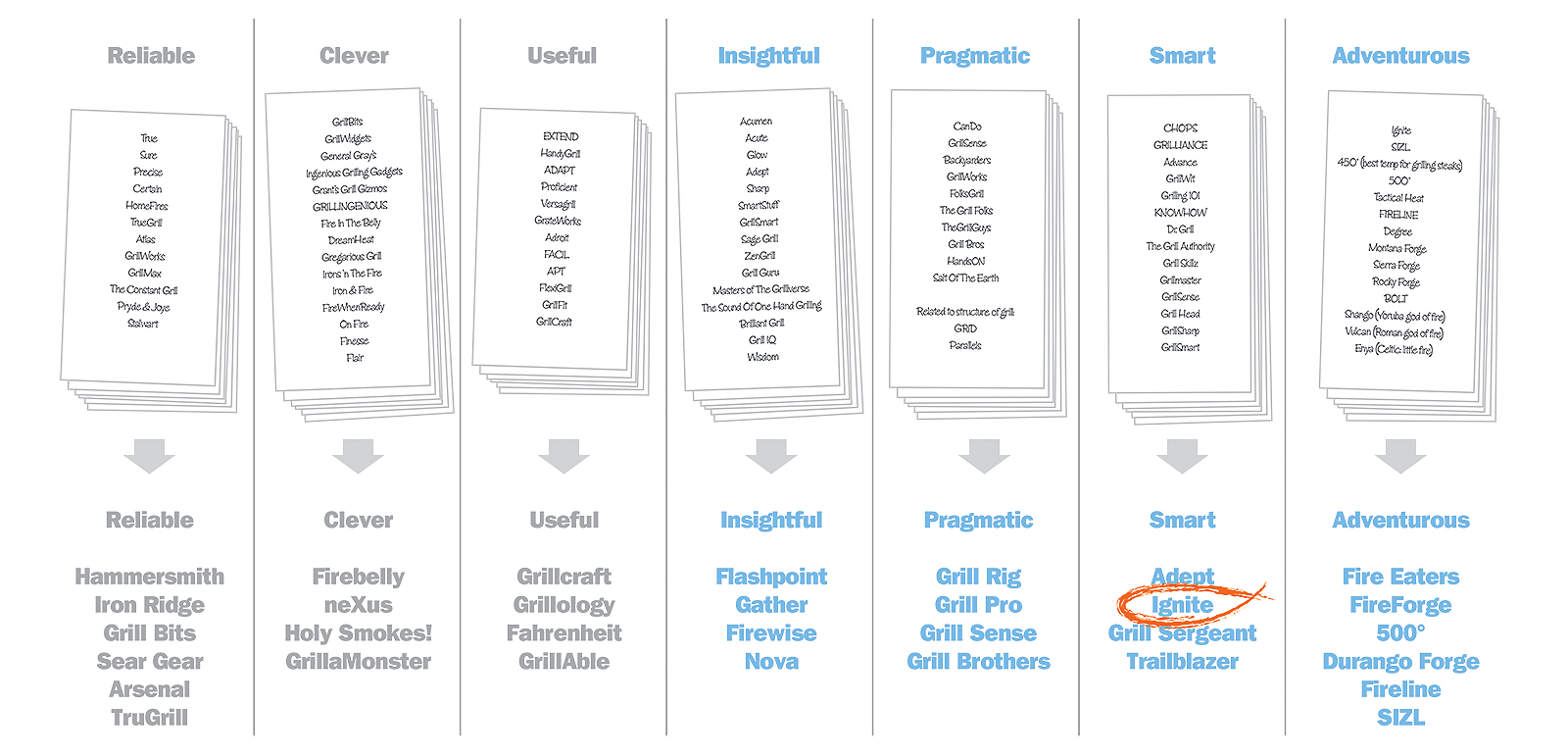 The logo mark itself had to deliver some kind of flame imagery in a simple enough form to be embossed into the steel, plastic and cast iron of the products, but it may have been the outlaw excitement of stealing a march on the competition that made the impish flaming head mark so attractive to Base 4. Letting your designers in on more of the business background of your brand will help them create design for you that is nuanced, real, and right on target.
The logo mark itself had to deliver some kind of flame imagery in a simple enough form to be embossed into the steel, plastic and cast iron of the products, but it may have been the outlaw excitement of stealing a march on the competition that made the impish flaming head mark so attractive to Base 4. Letting your designers in on more of the business background of your brand will help them create design for you that is nuanced, real, and right on target.
There is something about seeing your logo (or potential logos) for the first time. The summation of the brand in what may sometimes occupy only a fraction of an inch. Even so, and even with the clarity of purpose already established, at the logo development stage, CMA’s Ignite logo sketches demonstrate a wide design range but nuanced differences in personality.
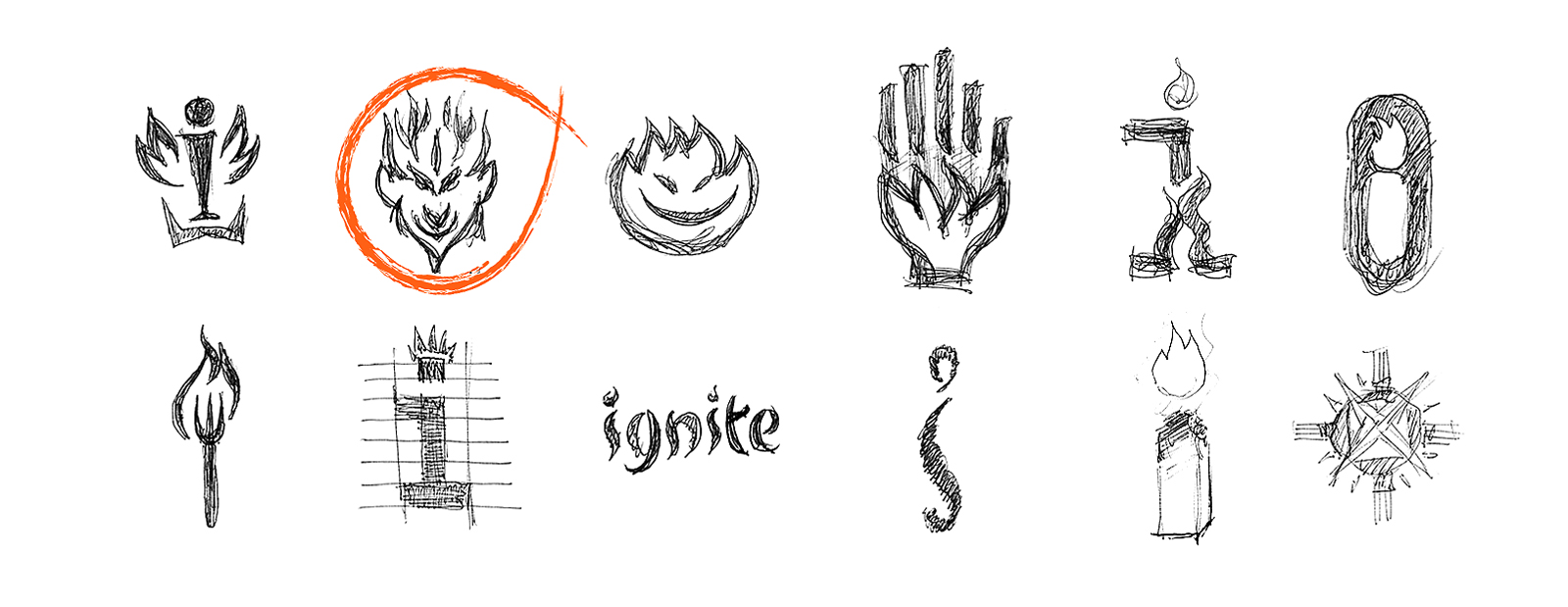
With feedback, next steps primarily involve refinement. As with individuals, tiny changes in a brand’s personality are noticed. Although the three faces here may appear similar, there is a small difference in gut reaction to each of them, and specific elements are more appealing and apropos than others.

More visual and strategic decisions have to be made at the packaging stage. Minor adjustments to spacing, typography, color and size all effect the overall feel once put into the packaging environment and later into the retail environment, just as someone dressed in a ball gown would look ridiculous at a baseball game, but might command respect or envy on the red carpet.
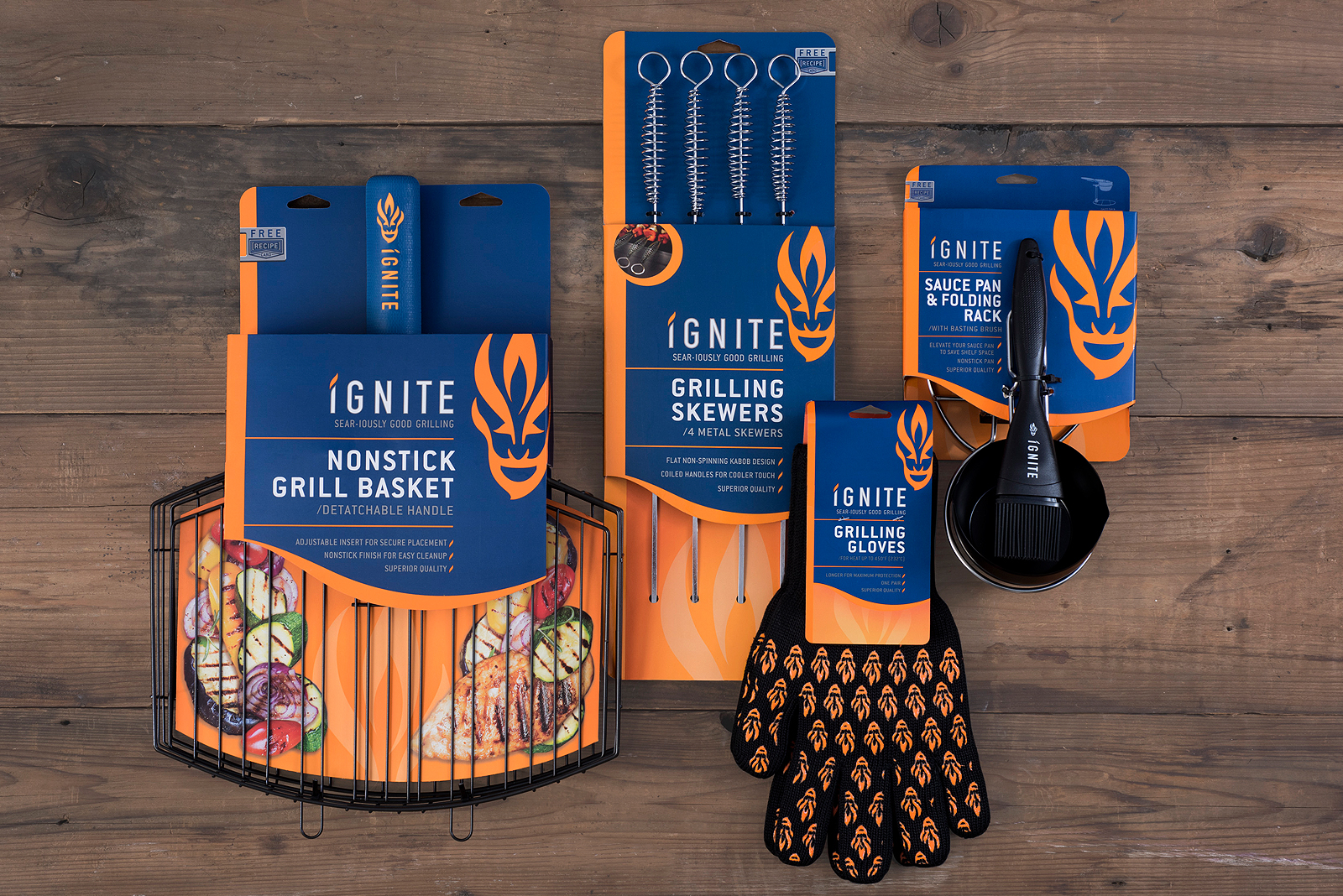
It goes without saying that the process goes a lot more smoothly when paired with a design firm that has the expertise, capabilities and conscientiousness to guide the evolution.
So short of design firm Tinder, how to find the right match for your needs?
1. History: Aside from the obvious insight picked up from having seen marketing trends evolve, a firm with enough history to have brought many brands to fruition comes with a vault of knowledge. How much marketing risk you are willing to take may have to do with the age and size of your brand, but an experienced design firm can manage that risk intentionally.
2. Versatility: A firm with a healthy combination of on-trend styles as well as established brands in their portfolio is a good sign. This shows they are listening to their clients and designing with their clients’ needs and interests in mind. Does the firm have capabilities throughout the branding spectrum? Even if you do not need a soup-to-nuts solution, or prefer the mastery that comes with a firm that specializes, just having knowledge of those capabilities demonstrates an understanding that can be meaningful at all stages of your brand’s journey. An openness of vision also means that your brand’s personality will be embraced and not constrained to a style simply because it is what that design firm is known for.
3. Flexibility: More so than many other types of design, packaging design requires a unique skill set, the ability to both visualize in three dimensions as well as to translate a vision to a variety of forms that all have their own physical (and often legal) parameters. Is the firm educated on these boundaries and does it have the creative flexibility to maneuver them? Remember, your consumer will most likely be reacting viscerally to your packaging, and something as subtle as a color shift or a last minute accommodation at the printer can throw off the feel of a whole design. Much better to tackle these kinds of things while the design is still in an early stage, and not have to deal with them when the deadlines are looming and press charges are racking up.
4. Transparency: Will the design firm work alongside you to present solutions and explain them when appropriate? A working dialogue can guide decisions in other areas as well, as a brand’s design is a culmination of many thoughts and criteria.
Brand personality and development are things that take place at a foundational level and support the marketing efforts that follow. When considering your brand & design, it is important to remember that the dumbest mistake is viewing it as something you do at the end of the process to ‘tidy up’ the mess, as opposed to understanding it’s a ‘day one’ issue and part of everything.
Next Steps: Are you considering a brand refresh, line extension or perhaps bringing a new product to market, but aren’t sure of your creative direction? We can help! Schedule a free 15 minute call with one of CMA’s Brand Experts. We’ll evaluate your brand and current packaging then offer some insights about extending your design based on your goals.





